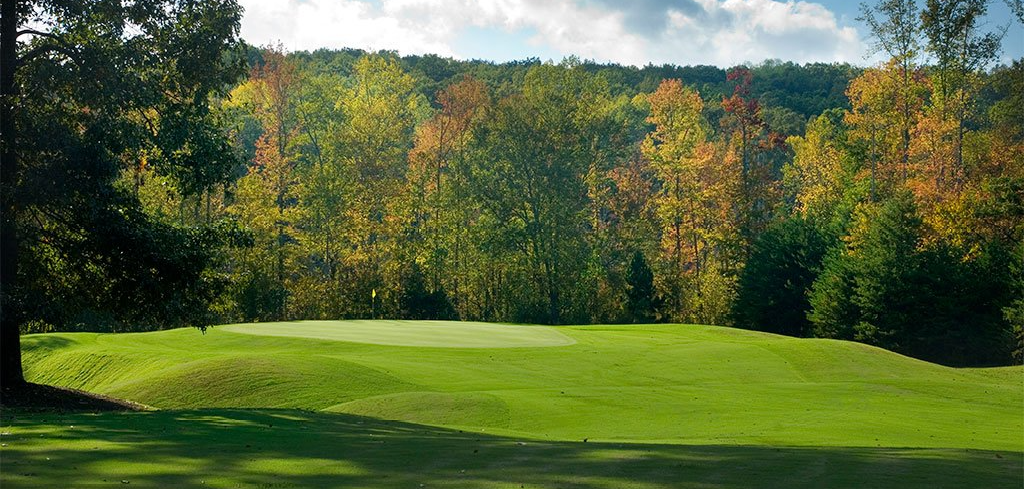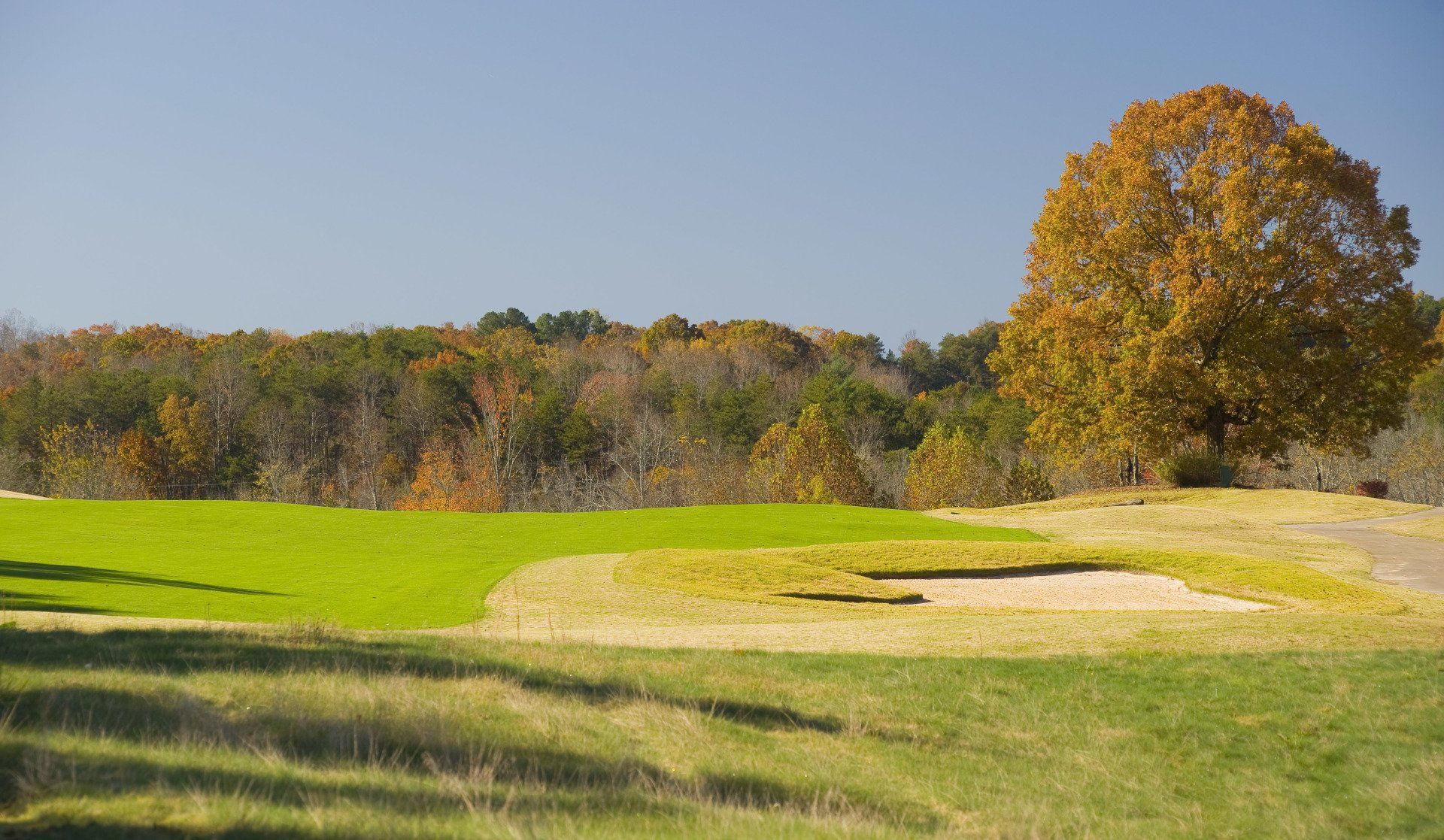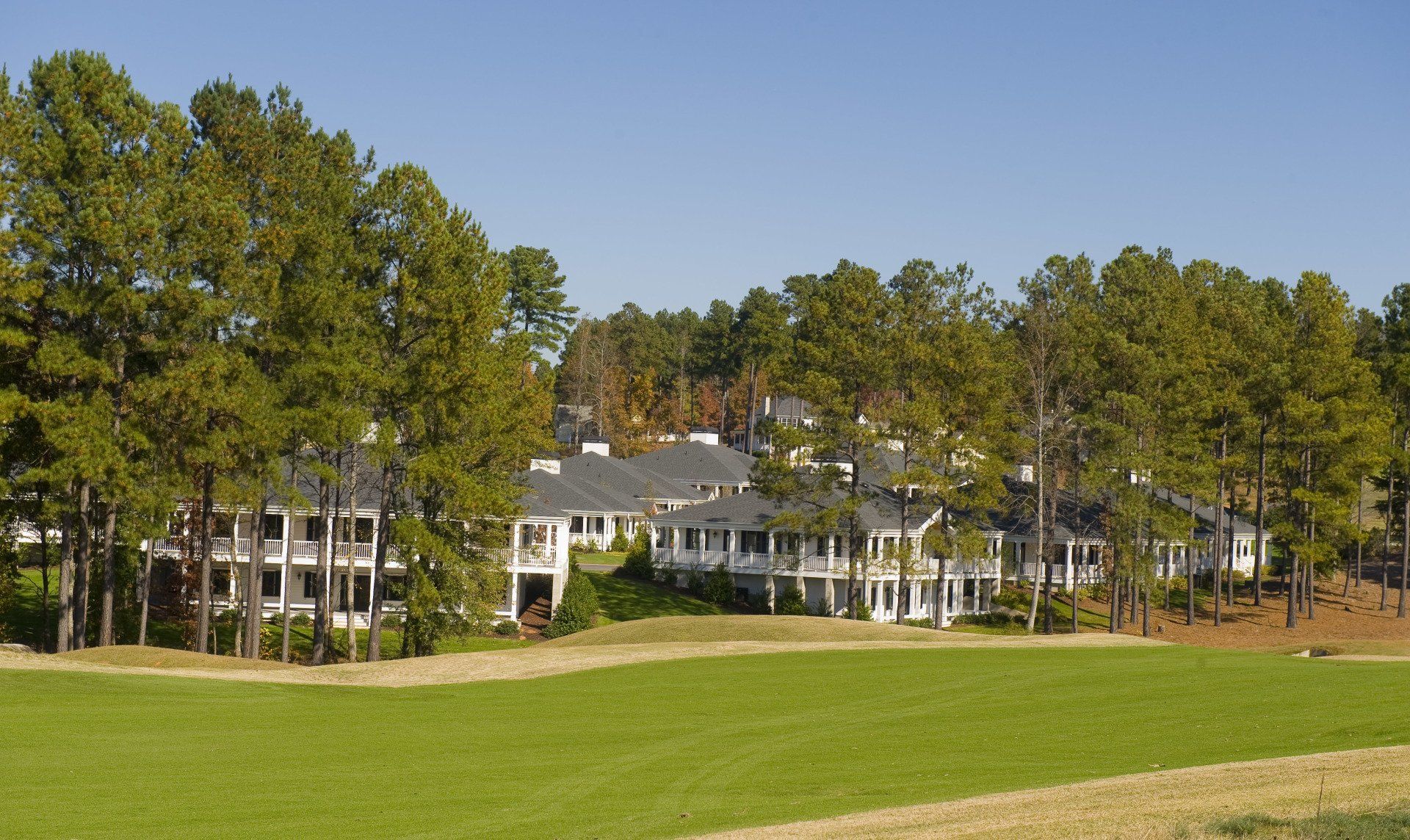Three Tips for Crushing a Successful Winter Overseed

Chad Taylor, Superintendent at Cherokee Valley, brings a straightforward perspective to a complex and demanding job: “if it’s green, it’s mine,” he’s prone to saying.
And “green” includes all 18 tee boxes and fairways throughout the winter months, as Cherokee Valley is one of the only public courses in the Greenville area that overseeds its Bermuda grass with rye grass.
Rounding into 2020, Cherokee Valley is as green as it’s ever been. How does Taylor do it? Part of it is expertise. He’s quick to deflect credit, but there’s an art and science to pulling off a successful winter overseed.
He’s also got the experience: Cherokee Valley has overseeded 18 of the past 20 years, all of which Taylor has overseen fastidiously.
Last, but in no way least there’s his inspiration. None other than the Mona Lisa of golf venues, Augusta National.
“I get to the Masters just about every year and study what they’re doing down there,” he says. “Viewers don’t realize that we only see Augusta National overseeded. In the summer it reverts to its native Bermuda grass.”
When it comes to overseeding, there’s no comparison to Augusta National’s wall-to-wall setup of rye grass. Some agronomists have estimated that such a dense, rich overseed could require million of dollars of irrigation and tens of thousands of dollars of fertilizer.
Many golfers who play on dormant Bermuda grass have been led to believe it is a superior playing surface to a rye overseed. The reasoning? Rye grass isn’t as dense and requires so much water it can become soggy and even muddy.
Not the case, says Taylor. The fairways at Augusta National are cut to around 3/8 an inch and mowed from green to tee. You won’t hear any of the players complaining about fairways lies, he adds.
“If you do the job right with a rye grass overseed it is superior to dormant Bermuda and is one of the best playing surfaces in the game,” he says. “From December through June it will give you excellent conditions.”
Living in the Upstate, many of us have Bermuda grass lawns that go dormant and turn brown from November through March. But an overseed that comes up short can make a yard look like an under-nourished chia pet.
We caught up with Taylor out on the golf course (where else) to get his top three tips for a perfect winter rye overseed, whether on the fairways or at home.
Select a Quality Seed
The rye grass seed that Taylor uses at Cherokee Valley has a 98% germination rate. Sure, it is a bit more expensive. But the return on investment for using a quality seed is worth it, according to Taylor.
“Rye grass has a high germination rate in general but picking a high-quality seed kicks it up a notch,” he says. “You want to ensure full coverage of the areas you want to overseed.”
Good seed with the right distribution will create a lush, fine-bladed lawn that maintains a rich green hue through the winter.
Know Your Weather Patterns
When it comes to timing, Taylor targets the third week of September for spreading the rye grass seed. Based on nearly two decades of meteorological data, the Greenville area typically experiences a cold (cool) front role in with temps in the high temps in the 70s and lows in the high 50s.
“The ground is still warm, and the air is very cool,” Taylor says “This is the ideal combination for rye grass. It does not like warm weather, and you want to ensure the 80-degree days are gone.”
October and November determine what the grass will look like in December and January. Ample rain, sun and cool temperatures create the best growing environment.
Nurture the Overseed
Even with optimal sunlight, water and temperatures, rye grass still needs fertilizer to reach its maximum potential. Taylor has sourced a fertilizer he loves, and encourages arm chair superintendents to do the same.
Also, it is important to get water on the seed right away.
“The seeds have the perfect growing environment, laying deep in the dormant Bermuda, but you have to run enough water through them to get the overseed started,” Taylor says. “I run a lot of water through our grass.”
Once it is established in a residential yard, periodic irrigation should suffice. If properly maintained, the overseed will last into late May or early June.
“You don’t have to worry about your Bermuda not coming back, it will,” Taylor says. “Rye and Bermuda grass are polar opposites so in that way they are complementary.”
Cherokee Valley Overseeding By the Numbers
- 250,000 Rye grass seeds per pound
- 13,000 Amount of seed applied
- 3,250,000,000 Estimated number of seeds
- 35 Acres of coverage
- 10 Hours it takes to spread
To learn more about memberships, golf packages and other innovative programs and amenities contact associate director of operations Lauren Landreth at llandreth@cherokeevalleyclub.com
or (864) 895-6758
x2.
Share
Tweet
Share
Mail
The Kee | Cherokee Valley Club

By Cherokee Valley Club
•
January 2, 2025
Reminder from our maintenance department for the upcoming weeks ahead! Currently we are tracking a cold front forecasted early to mid-January. Temperatures are of course subject to change as we get closer to January. Tarps are placed to the side of the greens in preparation for this cold front. With the possibility the greens will be covered for an extensive duration of time, updates will be sent out via email of possible closer of the course. We thank everyone for an amazing year at Cherokee Valley and looking forward to creating the best golf experience in 2025!

By Cherokee Valley Club
•
December 2, 2024
We want to thank everyone for their support after Hurricane Helene! We are blessed to have such a supportive community during that tragic time for the upstate. Our thoughts and prayers continue to go out to all the communities affected by the storm. We were very fortunate to receive minimal damage to the course, however there is still work to be done. Our maintenance crew is working hard to create the best golf experience in the Upstate. We look forward to seeing new and returning players this fall. As we shift into November tee times will be adjusted due to decreased daylight hours.
“Our entire goal has been to make this a dream club experience for families".
Matthew Jennings
Owner
Visit
450 Cherokee Valley Way,
Travelers Rest, SC 29690
The Shop Hours:
Open Daily from 6:30 am - 6:00 pm
Core 450 Hours:
Monday - Thursday 11:00 am - 8:00 pm
Friday - Saturday 11:00 am - 9:00 pm
Sunday 10:30 am -2:00 pm
Powered by Long Drive Agency ⛳️
Powered by Long Drive Agency ⛳️






